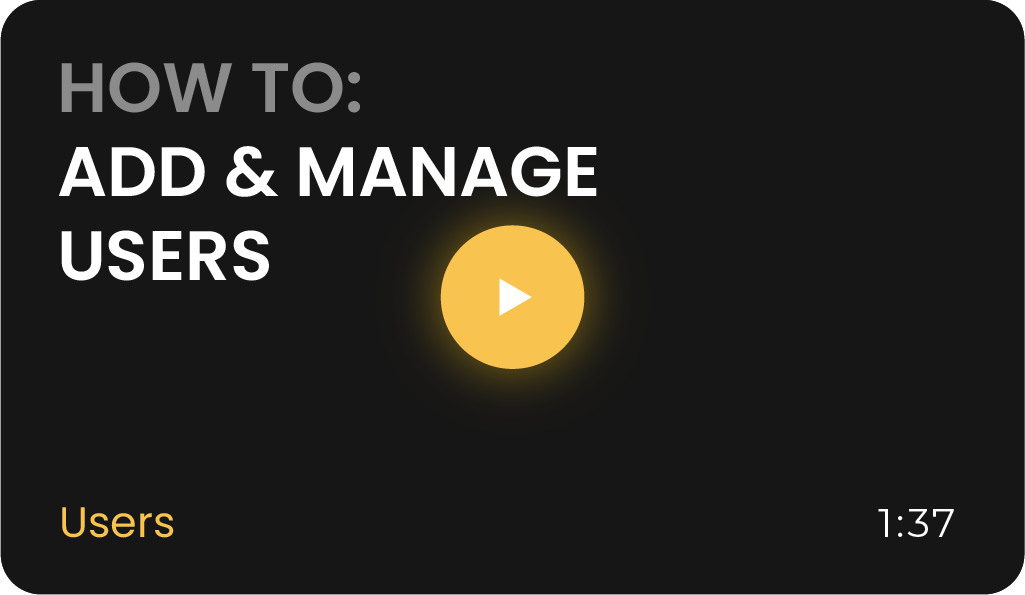Table of Contents
Overview: What Are App Users?
App Users are individuals authorized by an account administrator (you) to access your mobile app. When they sign in, the services they are authorized for are automatically downloaded and refreshed on their devices.
How to Create an App User
- Navigate to the ‘Users’ Page
- Click on the ‘Users’ link in the top navigation menu.
- Select ‘Add User’ to begin.
- Choose a Username Type
- Email Address
- Users can manage their own passwords and use the “Forgot Password” feature.
- Supports Sign in with Google for accounts linked to Google.
- Single Sign-On (SSO) can be integrated for seamless logins.
- Generic email addresses can be used for shared devices.
- Plain Text Usernames
- Ideal for scenarios where email addresses aren’t available.
- Useful for tracking activities, locations, or roles instead of individuals.
- Admins control username creation, but alternative methods exist for tracking activities and locations.
- Email Address
- Optional Configurations
- Authorize Services: Assign specific services to the app user (this can also be done later).
- Limit Device Access: By default, users can access unlimited devices. Check the ‘Set limit device’ box to restrict the number of devices.
Adding App Users During Service Creation or Editing
When creating or editing a service:
- Add users on the Users Step of the process.
- Once assigned, services will appear on the app after the user signs out and signs back in or refreshes the services screen.
- Note: Users not added to the list cannot access the service.
Managing App Users in Bulk
To add or edit multiple users simultaneously:
- Use the ‘IMPORT USERS’ option on the App Users page.
- Upload a CSV file containing user details.

CSV File Guidelines
- Do Not Include Column Headings: These are for your reference only.
- Download Existing Users: Export the current user list as a CSV for editing. (Passwords are not included in downloads.)
- Set Passwords Based on Username Type:
- Plain Text Usernames: Include passwords in the uploaded file.
- Email Address Usernames:
- Accounts created before June 27, 2024: Passwords can still be set via CSV upload until January 31, 2025.
- Accounts created after June 27, 2024: Leave the password field blank. Users will receive an email to create and manage their passwords.
- Starting February 1, 2025, all email users will manage their passwords independently unless SSO or Sign in with Google is used.
Deleting Users via CSV
- Add the term ‘delete_approved’ in column 5. Blank cells indicate no deletion.
Device Limits in CSV
- ‘0’: No limit (default).
- ‘-1’: No access.
- ‘1’ or more: Number of devices a user can sign into.
Additional CSV Rules
- User ID Column: Leave blank for new users; the system will auto-generate an ID.
- Existing Users: Only include them if changes are needed. Blank cells for existing users mean “no change.”
- Save the file as comma-delimited CSV before uploading.
Handling Upload Errors
Errors during upload are displayed on the App Users page. Changes that were successfully applied won’t need re-uploading.
Sign in with Google
Organizations using Google accounts can enable their app users to log in with Google. This option can be disabled in Settings.
